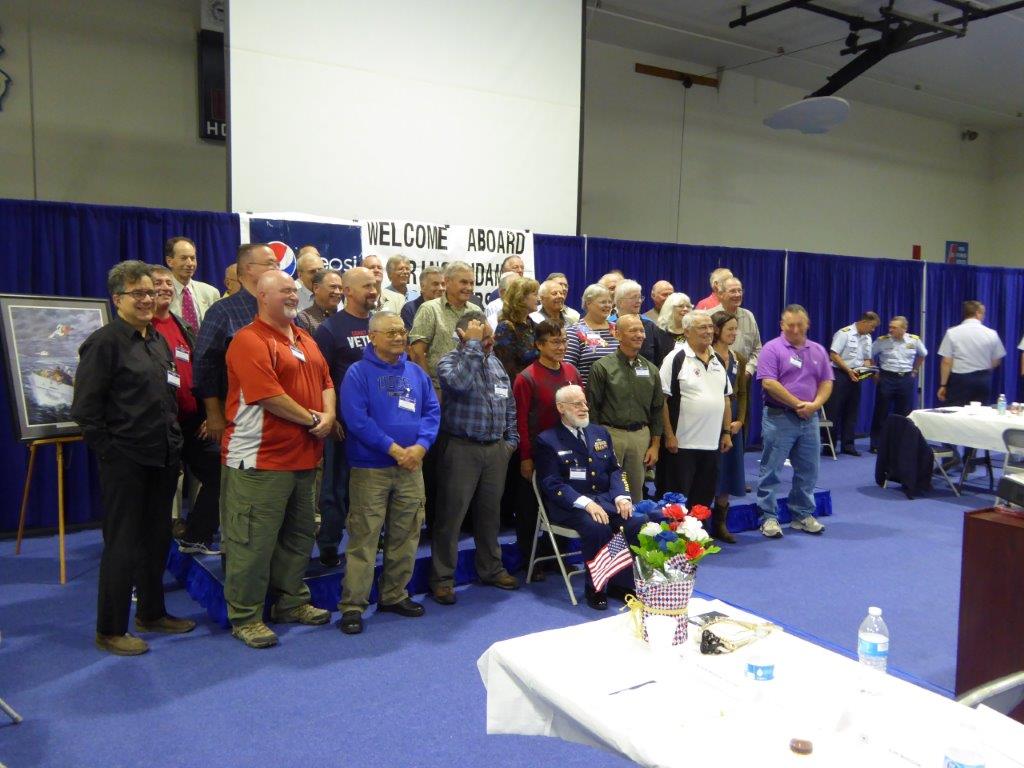
KCAW’s Rich McClear said Prinsendam is a great triumph for local reporting. The front page of the Sitka Sentinel on the Monday after the rescue. (Photo courtesy of Newspapers.com)
When the cruise ship Prinsendam burned and sank off of Cape Edgecumbe 35 years ago, it brought an amazing story to an end. But, like all great tales, there is a story within a story.
Reporters in 1980 used typewriters. Fax machines were a novelty. Kodachrome photographs had to be shipped out of state for processing. Covering the rescue of 500 people from a burning cruise ship in the Gulf of Alaska was a huge challenge for Southeast media organizations — but they succeeded. Just as the Prinsendam is one of the greatest rescue stories of all time, it is also one of greatest achievements of regional journalism.
In the third-and-final part of our series on the 35th anniversary of the Prinsendam rescue, KCAW’s Robert Woolsey spoke with Rich McClear about how the men and women of Southeast media delivered the story.
Rich McClear was the radio manager at KTOO-FM in Juneau in 1980. The city was in the middle of its centennial celebration, and every Coast Guardsman had been recalled to duty aboard the cutter Boutwell. McClear said, “Everyone else in Juneau was awaked by the blast from the Boutwell, but I slept right through it, even though I could see it from my window.”
Just as we do now, reporters called the Coast Guard District 17 headquarters for a lead on what was happening. But the similarities end there.

KCAW’s Rich McClear gathered interviews for this series during a reunion of Prinsendam survivors and rescue crew in Seattle. (Rich McClear/KCAW photo)
McClear’s news director was named Jim Gordon. Without really understanding what was going on, Gordon asked McClear if he could get a plane — an incredible expense for a public radio station at the time.
“[Gordon] and Dave Carpenter from the Anchorage Times were able to charter a plane,” said McClear. “They called CNN to see if they could sell some video, to help cover the costs of the plane. And CNN said, ‘If you’ve got video, we’ll buy it.’ That was a good thing because when my boss, the general manager of KTOO, heard out about it he was upset that we had expended the money to rent the plane.”
Sitka Sentinel Front Page, Oct. 6, 1980
Sitka Sentinel Page 6, Oct. 6, 1980
But it didn’t take long for word of the Prinsendam to reach the big, lower-48 news bureaus. Without a satellite uplink, McClear says the locals weren’t able to get their film to CNN before the networks began running their own footage.
They came up with another idea. Because of fog in Juneau, the KTOO plane flew over the Prinsendam, but then had to land in Sitka. That’s where most of the survivors were headed.
Rich McClear: Jim and Dave wrote a boilerplate story, and then interviewed people coming off. In the boiler plate they put a paragraph about someone locally. Then they went to Kettleson Library and got a directory of papers. They called weeklies in New Jersey and Iowa, places like that, and said, We’ve got an exclusive story about your survivor off the Prinsendam! There were fax machines then. So they were able to fax the story, and that’s how we partially paid for the airplane.

A life vest autographed by rescuers, at the 35th Anniversary of the Prinsendam sinking in Seattle. (Rich McClear/KCAW photo)
Nevertheless, their eyewitness account of the ship, combined with their connections in the Coast Guard and with other sources on the ground, gave the local news organizations an advantage in reporting the story. McClear says KTOO, the Juneau Empire, and the Sitka Sentinel ran an amazing week of coverage — the Empire even put out an extra edition.
Some network reporters, meanwhile, were just learning that you couldn’t rent a car in Juneau and drive to Sitka or Yakutat.
McClear says there are two main differences between how the story was covered in 1980, and how it would be covered today. First, the ships have grown dramatically. Instead of 500 passengers, some ships in the Gulf now carry more than 3,000 passengers, and 1,500 crew. A Prinsendam-style airlift would be extraordinarily difficult, even in the best of conditions.
And, of course, the news would spread instantly.
Rich McClear: Reporters could virtually cover it. As soon as video came into Sitka the whole world could see it, because it would go out via the internet. There would be high-quality interviews instead of raspy phone interviews we took from Juneau to Sitka. And a lot of the coverage could be done remotely because there’s high-quality audio and video conferencing, through Skype and things like that. It would have been covered much more quickly, but I’m not sure we would have had the same happy outcome because of the larger ships. There are still only three helicopters in Sitka.
Even though the Prinsendam eventually did make worldwide headlines, McClear says the story never achieved epic status. Many people may be only hearing the name Prinsendam for the first time in this retrospective, while the Exxon Valdez is a cultural icon. Part of the problem might be that the Coast Guard was just too good.
McClear remembers discussing the event with an editor at one national network who wanted the story — but only if someone died. And that kind of notoriety — unfortunately — might be one thing that has not changed in news over the last 35 years.
This story is Part 3 in a series to commemorate the 35th Anniversary of the Prinsendam Rescue. Here is Part 1 and Part 2.
































